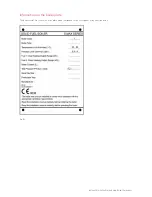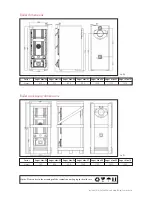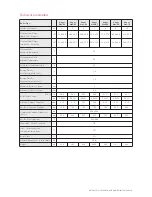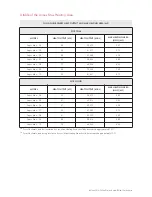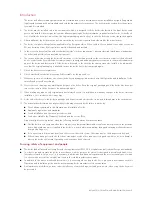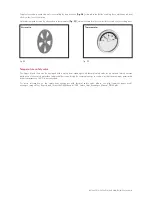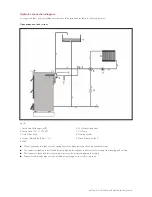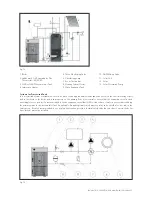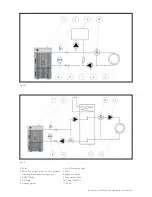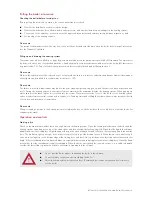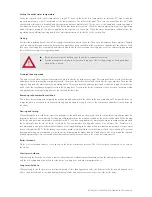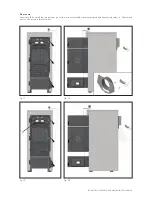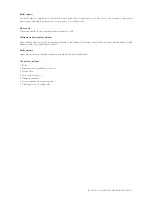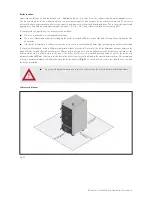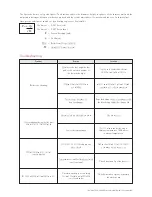
INSTALLATION, OPERATION AND MAINTENANCE MANUAL
15
Important information
■
The boiler may only be operated by an adult familiar with these Operating Instructions.
■
Shut the boiler down every time there are any (even temporary) flammable or explosive fumes present on the premises from
which combustion air is supplied to the boiler (e.g. From paint when painting, laying and spraying molten substances, from
gas leakage, etc.).
■
It is forbidden to light the boiler with explosive substances.
■
It is forbidden to overheat the boiler.
■
At the end of the heating season the boiler, flue and flue adapter, must be thoroughly cleaned. Lubricate all hinges, the flue
flap mechanism and other moving.
Maintenance
Boilers maintenance are made in three programs. Daily (in everyday use), periodic and yearly.
Daily controls
These are the processes that the user must apply every day in season of everyday use. The combustion chamber and fittings must
be checked. Combustion products in the chamber must be cleaned and the ash tank must be discharge.
Periodic controls:
For efficient use, preventing the possible failures and optimum life of the boiler periodic controls are important. It is recommended
that periodical controls for the boiler must be made by once in every three months. These periodical controls are made by authorised
technicians by applying following processes.
■
Boilers combustion chamber and smoke channels check and cleaning if needed.
■
Leakage controls of water input – water output of the boiler and flue connections.
■
Valves check.
■
Pumps check Burning control (with eye).
■
Working and safety controls of hydraulic system and the boiler.
Yearly controls:
Yearly controls of the boiler must be made by authorised technicians before the season starts. Flue and flue lines must be cleaned
before calling technicians for yearly controls. In yearly controls authorised technicians apply the following processes.
■
Situation of the insulations and the sections and isolation rope controls.
■
Working pressure test for burning adjustment with the flue gas measurement system if needed.
■
Boiler burning room and possible soot layers on smoke channels are checks and cleanings.
■
Leakproof of the connections of the boiler test.
■
Valves test for proper opening and closing.
■
Water filter test. Cleaning if needed.
■
Expansion tank controls, cleaning if needed.
■
Sensor of the pressure tests. Cleaning or renewing if needed.
■
Working and safety controls of hydraulic system and the boiler.
Boiler cleaning
When the boiler is used, soot and fine ash accumulates on the boiler walls, mainly on heat exchanger ribs and in the flue neck,
which reduces heat transfer and the boiler output. The actual quantity of soot and fine ash will depend on the quality of the fuel
used and on the boiler operating conditions. If the boiler is oversized or was for some reason run at low temperatures, more soot
is generated. This may also result in inadequate chimney thrust. The boiler must be cleaned regularly, at least once a month, which
is done with a steel brush through an open boiler door.
All boiler walls inside the combustion chamber and combustion gases routes should be cleaned. If a larger quantity of tar has
accumulated on internal walls of the combustion chamber, it must be removed with a scraper or burnt with hard wood (or coke),
running the boiler at maximum operating temperature.

